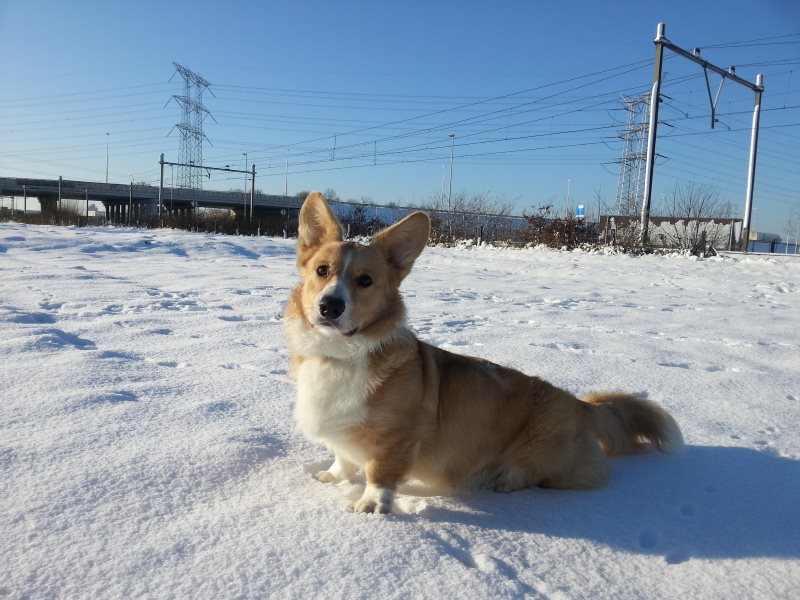0-4 weeks
When puppies are just born, they can’t smell, hear, or see. They can’t control their own temperature and need help eliminating. The first 2 weeks of a pup’s life is also referred to as the neonatal stage, and during this period they are fully dependent on their mother’s care.

Between week 2 and 4, the eyes and ears of the pup will open, and they will start interacting with their mother and litter mates. Around 4 weeks of age, the pup begins to walk, even though at the start it will look more like crawling. They will also get their razor-sharp puppy teeth. During this period, the first socialization of the pup already starts. The foundation is laid for the learning of social behaviors, like biting inhibition. It is important to prevent any sudden changes or loud noises during this period, as even though still little, negative experiences can already affect the development of the dog’s personality.
4-8 weeks
The mother dog will wean the pups gradually. Pups will play with each other and learn the rules of how to interact with one another. They will start exploring and can be gradually exposed to everyday stimuli. During this period, important social behaviors are learned. Pups should not be separated from their mother or siblings at this stage.

8-12 weeks
The first fear period of the pup will fall around this time and object associations are formed. Most puppies will be wary and fearful of new situations, but through positive experiences will learn and adjust to these new stimuli and situations. It’s important to expose the pup to new people, situations, and animals in a positive way, to get the pup familiarized with all sorts of things. Pups at this age are like a sponge and will soak up all new experiences.
12-24 weeks
The first fear period will slowly fade away. Pups will become more independent and curious. Keep exposing your dog to new situations, so they can learn and develop their social skills. This period is a good time to start puppy classes once the pup is fully vaccinated. Make sure that the classes are force free, and training sessions are fun and successful for the pup. Keep exposing the pup to new situations in a controlled way, so experiences are positive, which will make them feel secure and confident. Around 3 to 4 months of age, your puppy will also start losing it’s puppy teeth.

6-12 months
This is the period your pup will become a teenager, also called pre-adolescent stage. The dog will start to test boundaries. Pre-adolescent dogs will behave more independently and confidently. Dogs at this age need stimulation and activity to prevent boredom. Most dogs will also reach sexual maturity during this period. It is important to keep up with training and providing your dog with enough exercise and mental stimulation. During this time, a second fear period may also arise. It will be less predictable than the first fear period and can fall anywhere between roughly 6 and 14 months of age. Smaller dogs tend to get the fear period at a younger age than bigger dogs.

12-24 months
Most dogs will reach emotional maturity at this age. Bigger breeds will develop slower than smaller breeds, in both emotional as physical maturity. Make sure to keep training and socializing your dog throughout its life.

*When exploring the world, keep this rule of thumb in mind. A puppy can be walked for five minutes, for every month of age. Don’t over-exercise a pup as it may have a negative impact on their musculoskeletal development. Give your pup plenty of rest so they don’t get overstimulated.
The first year of a puppy
Will have passed before you know it. The choices we make as pet owners will partially determine if our pups will grow up to be well-adjusted adults. By providing knowledge about puppy development, we hope to improve the welfare of pet dogs and inform pet owners about the choices they can make when it comes to caring for their puppy. Did you know we have a specialized puppy package available for puppy owners? If you would like more information about our puppy sitting service, dog training service, or pet relocation service. Feel free to reach out. We will be happy to help.

